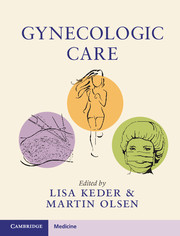Book contents
32 - Endometrial Cancer
from Section 5 - Gynecologic Oncology
Published online by Cambridge University Press: 01 February 2018
Summary
Introduction
Cancer of the endometrium is the most common gynecologic malignancy in the United States. At present an estimated 621,600 women in this country are living with a diagnosis of endometrial cancer. In general, 90 percent of women present with abnormal vaginal bleeding resulting in endometrial sampling which is needed to support the diagnosis. Most commonly for the cancer of postmenopausal women, the median age at diagnosis is 60 years. Unfortunately, this malignancy is becoming increasingly common in the premenopausal population with roughly 20–25 percent of patients diagnosed prior to the menopausal transition.
Although overall cancer mortality rates have decreased over time, the mortality rates in endometrial cancer have increased 100 percent since 1990. Given the relationship of this cancer to obesity and obesity-related disease, in the United States the incidence and mortality rates are expected to continue to rise mirroring the increasing obesity rates. Up front surgical staging, indicated adjuvant therapy, and genetic testing – coupled with the modification of behavioral risk factors – are now considered the key components in managing this malignancy.
Scope of the Problem
In the United States, endometrial cancer is the most common malignancy of the gynecologic tract and will impact 3 percent of US women during their lifetimes. The National Cancer Institute estimates that 54,870 new cases and 10,170 endometrial-cancer-related deaths occurred in 2015. These rates represent more than a 20 percent increase over the past 10 years.
Epidemiology
Endometrial cancer impacts women at a mean age of 60 years; 20–25 percent of women, however, will be diagnosed prior to menopause, and 5 percent of these premenopausal patients are younger than age 40. While all races are at risk, rates of endometrial cancer are the highest in non-Hispanic Caucasian women. Early stage at diagnosis is found in 85 percent of patients with this malignancy. Table 32.1 describes the stage distribution and overall survival of endometrial cancer patients.
The two pathogenic categories of endometrial carcinoma are described in Box 32.1. Additional information on these categories is listed in Table 32.2. The most common subtype, known as type I endometrial carcinoma, is of endometrioid histology. The tumors may demonstrate squamous components and less commonly mucinous differentiation. Type II endometrial carcinomas comprise less than 15 percent of cancer cases and may be high-grade endometrioid, papillary serous, or clear cell in histology.
- Type
- Chapter
- Information
- Gynecologic Care , pp. 306 - 316Publisher: Cambridge University PressPrint publication year: 2018



